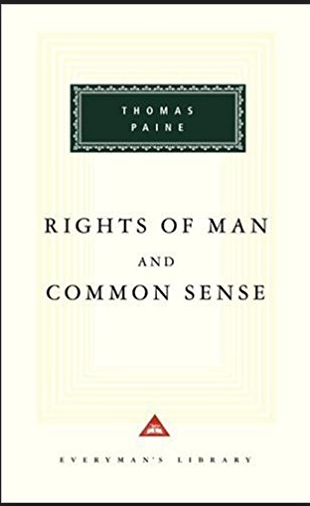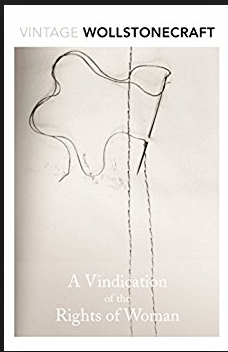Jane Austen: Behind the Bonnets
Many will have seen the films and luscious TV adaptations of Austen’s works – beautiful costumes, affluent country houses, the carriages. And at the centre of it all, an attractive (and sometimes headstrong) young woman with marriage on her mind. Jane Austen, who died 200 years ago today, seems to epitomise the polite English society of the early nineteenth century. But behind this lay a backdrop of war, political unrest and social change.
War
These issues were not always apparent in the novels, but there are some hints. Persuasion – published posthumously in 1818 – includes several naval characters including the male protagonist Captain Wentworth. As the Napoleonic Wars drew to an end, naval personnel returned. Captain Wentworth left for the War as a poor prospect for our heroine Ann Elliot, but he returns a rich man, well paid for capturing enemy vessels and thus a sought-after catch for the young women of the novel. Characters such as Captain Wentworth along with Colonel Brandon in Sense and Sensibility are considered decent and honourable men, and a contrast to the rather louche and morally corrupt John Willoughby who is intent on marrying a rich woman while toying with the affections of Marianne Dashwood. Two of Jane Austen’s brothers were in the Navy; she had great admiration for it and followed the French wars closely.
Pride and Prejudice, published in 1813, contains a sub-plot dealing with a regiment stationed near Longbourn, whose soldiery turn the heads of the younger Bennet daughters and provide a contrast to the upright, proud Mr Darcy in the shape of the dastardly George Wickham. He flirts with Elizabeth Bennet, tries and fails to marry the wealthy Mary King, but eventually elopes with Lydia Bennet, being forced to marry her by Mr Darcy who in exchange pays off Wickham’s substantial debts.


Slavery
Politically it was a time of change. 1807 saw the Slave Trade Act which abolished the slave trade (but not slavery) in the British Empire.

Slavery was finally abolished in 1833. It is thought that Jane Austen was an abolitionist, and the nearest she comes to this issue is in Mansfield Park, written in 1814. Sir Thomas Bertram owns Mansfield Park and an estate in Antigua. It is implied that Sir Thomas made his fortune from the slave trade.
Civil unrest

Born in 1775, Jane Austen grew up against a backdrop of political turbulence. 1776 had seen the American War of Independence and loss of this major colony was unsettling and keenly felt. The French Revolution, which had started in 1789 and went on for 10 years, was causing great concern in the UK.
Britain had been at war with France since 1793 (with a brief pause) until the Battle of Waterloo in 1815 and it contributed significantly to the domestic unrest. In 1811 the Prince Regent took on the duties of his father George III , who was incapacitated, becoming the Regent upon the death of his father in 1820. The Prince was a laughing stock and was derided by the public for his extravagant lifestyle and for his corpulent appearance. Respect for the Monarchy was low, and this public disgust was epitomised in the works of political cartoonists such as James Gillray and George Cruikshank. They did not hold back.

There was a great deal of agitation throughout the country. The French Wars had caused food shortages and people were rioting.
In addition, the Luddites, fearing for their jobs, were involved in machine wrecking riots. The UK Government was in no mood for sedition: unrest made them fearful, especially in light of the revolutions in America and France, and their reaction was to suppress any hint of subversion.
When Thomas Paine wrote The Rights of Man in 1791 in defence of the French Revolution, he was convicted, in abstentia, for seditious libel against the Crown. But Paine could not be hanged as he was in France actively supporting the Revolution.
The role of women
Similarly inspired, Mary Wollstonecraft wrote A Vindication of the Rights of Women in 1792, having already written Thoughts on the Education of Daughters in 1787. Writing was deemed to be a disreputable occupation for women at this time and she argued against the acquisition of ‘accomplishments’ which was so embedded in the society of Jane Austen. To be skilled in painting, drawing, music, needlework, languages and dancing were all seen as essential achievements for a young woman of good breeding. Mary Wollstonecraft felt that women should have practical skills should they need to work, as well as being useful wives and mothers rather than mere ‘social ornaments’. In Pride and Prejudice, Elizabeth Bennet is well aware that she is not as accomplished as other young women, such as Caroline Bingley or the daughter of the haughty and supercilious Lady Catherine de Burgh, both potential wives for Mr Darcy. Darcy, however, still chooses Elizabeth. Jane Austen wrote about the suffering of single women and ‘the unfortunate situation of females, fashionably educated and left without a fortune’: she saw the institution of marriage as patriarchal and unfairly supported by the legal system. Mary Wollstonecraft, although denounced by the establishment of her day, became a major influence on the feminist movement of the early Twentieth Century. Jane Austen’s father, a Rector, was rather unusual for his time in that he encouraged Jane to write and gave her full access to his library.

Marriage
Jane Austen’s books are sometimes dismissed as trivial stories about young girls desperate to marry a rich man. However, this is driven by necessity and fear. The plight of single women is a recurrent theme in her novels: In Pride and Prejudice the family estate is to be entailed away to the male heir and distant cousin, Mr Collins, hence Mrs Bennet’s desperation for her six daughters to have secure marriages. Elizabeth Bennet was a young woman ahead of her time, rebellious but within the constraints of her society. She rejects a proposal of marriage from Mr Collins, despite knowing that this would secure the future for her mother and sisters on the death of her father. She dislikes him, and knows they will make an unhappy union. In her own life, Jane Austen received a proposal from the heir to a large estate, a marriage that would have ensured a secure future for her and her sister Cassandra. But he was dull and unattractive and she broke off the engagement, keeping her independence and so continuing her writing career. This scenario is echoed in Pride and Prejudice as Charlotte Lucas marries Mr Collins, which is clearly not a love match.
The shadow of poverty
In 1805 Jane’s father died and Jane, her sisters and mother were in reduced circumstances. Her mother had only a small amount of money to live on and relied on Jane’s brothers. Jane’s friend Martha Lloyd was left homeless after the death of her mother and comes to live with Jane and her family. Together, they all move to Southampton to live with her brother and his wife, before moving again to her beloved Hampshire, where they lived in a cottage on the estate of her brother Edward. This situation is referenced in Sense and Sensibility as sisters Marianne, Elinor and Margaret along with their mother have to leave the grand family home on the death of their father, as their half brother John reneges on his deathbed promise to his father to look after them. They rely on the kindness of their mother’s cousin, Sir John Middleton and move to a modest cottage on his estate in Devonshire.
This theme occurs in other novels. In Emma, Miss Bates lives with her mother in reduced circumstances and is reliant on the goodwill of her friends and neighbours. After insulting them, Emma is chided by Mr Knightly as he refers to their previous high status and Emma’s lack of sensitivity to their current situation. Persuasion contains two poor widows, Ann Elliot’s friend Mrs Smith who suffers ill health and has little money, and Mrs Clay who is companion to Ann’s sister Elizabeth Elliot and who has designs on their father Sir Walter Elliot to whom marriage and the birth of an heir would ensure a secure future. Even for many middle and upper class women, the shadow of poverty and homelessness was not far away.

In What Regency Women did for Us, Rachel Knowles acknowledges twelve extraordinary women from various background, including Jane Austen, who despite limited education and barely any rights, achieved remarkable things and left a legacy for future generations.
Richmond upon Thames Library Services hold many books by and about Jane Austen and the Georgian and Regency periods. For more information, visit our online catalogue.
[Gina Morley, Library Assistant]
